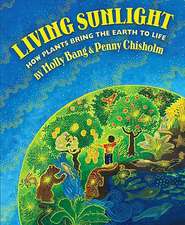New Perspectives in Histamine Research: Agents and Actions Supplements, cartea 33
Autor H. Timmermannen Limba Engleză Paperback – mar 2012
Din seria Agents and Actions Supplements
-
 Preț: 400.26 lei
Preț: 400.26 lei -
 Preț: 387.38 lei
Preț: 387.38 lei -
 Preț: 384.86 lei
Preț: 384.86 lei -
 Preț: 381.98 lei
Preț: 381.98 lei -
 Preț: 382.95 lei
Preț: 382.95 lei -
 Preț: 388.52 lei
Preț: 388.52 lei -
 Preț: 399.67 lei
Preț: 399.67 lei -
 Preț: 392.60 lei
Preț: 392.60 lei -
 Preț: 387.75 lei
Preț: 387.75 lei -
 Preț: 381.43 lei
Preț: 381.43 lei -
 Preț: 384.09 lei
Preț: 384.09 lei -
 Preț: 390.63 lei
Preț: 390.63 lei -
 Preț: 390.84 lei
Preț: 390.84 lei -
 Preț: 388.52 lei
Preț: 388.52 lei -
 Preț: 397.01 lei
Preț: 397.01 lei - 5%
 Preț: 393.58 lei
Preț: 393.58 lei -
 Preț: 390.08 lei
Preț: 390.08 lei -
 Preț: 386.61 lei
Preț: 386.61 lei -
 Preț: 388.13 lei
Preț: 388.13 lei -
 Preț: 392.37 lei
Preț: 392.37 lei - 5%
 Preț: 721.19 lei
Preț: 721.19 lei - 5%
 Preț: 364.53 lei
Preț: 364.53 lei - 5%
 Preț: 366.91 lei
Preț: 366.91 lei -
 Preț: 379.09 lei
Preț: 379.09 lei - 5%
 Preț: 360.34 lei
Preț: 360.34 lei - 5%
 Preț: 368.19 lei
Preț: 368.19 lei
Preț: 400.26 lei
Nou
Puncte Express: 600
Preț estimativ în valută:
76.59€ • 80.19$ • 63.53£
76.59€ • 80.19$ • 63.53£
Carte tipărită la comandă
Livrare economică 09-23 aprilie
Preluare comenzi: 021 569.72.76
Specificații
ISBN-13: 9783034873116
ISBN-10: 3034873115
Pagini: 444
Ilustrații: 444 p.
Dimensiuni: 170 x 244 x 23 mm
Greutate: 0.7 kg
Ediția:Softcover reprint of the original 1st ed. 1991
Editura: Birkhäuser Basel
Colecția Birkhäuser
Seria Agents and Actions Supplements
Locul publicării:Basel, Switzerland
ISBN-10: 3034873115
Pagini: 444
Ilustrații: 444 p.
Dimensiuni: 170 x 244 x 23 mm
Greutate: 0.7 kg
Ediția:Softcover reprint of the original 1st ed. 1991
Editura: Birkhäuser Basel
Colecția Birkhäuser
Seria Agents and Actions Supplements
Locul publicării:Basel, Switzerland
Public țintă
ResearchCuprins
Histaminergic neuron system: Morphological features and possible functions.- Neuroendocrine functions of histamine.- The histamine H3-receptor: Pharmacology, roles and clinical implications studied with agonists.- Characterisation of the binding of the histamine H3 receptor agonist [3H](R)-alpha methyl histamine to homogenates of rat and guinea-pig cortex.- The significance of brain histamine and its receptors in opoid stimulation of the pituitary-adrenocortical activity.- Importance of histamine for seizure susceptibility.- Hypothalamic neuronal histamine modulates energy balance in rats.- Role of histamine in pathophysiology of stress in rats.- Histamine receptors in the lung.- Reversible and irreversible labelling of H1- and H2-receptors using novel [125I]probes.- Histamine receptors and interactions between second messenger transduction systems.- Histamine H1-receptors on astrocytes in primary cultures: A possible target for histaminergic neurons.- Pharmacology of non-sedating H1 antihistamines.- Controlled clinical trials and cross-sectional studies with histamine measurements and histamine receptor antagonists: solving the problem of preoperative H1- + H2-prophylaxis by asking new questions?.- Structure-activity relationships of histamine H2-agonists, a new class of positive inotropic drugs.- Therapeutic value of H2-receptor stimulation in congestive heart failure. Hemodynamic effects of BU-E-76, BU-E-75 and arpromidine (BU-E-50) in comparison to impromidine.- Inhibition by cations of antagonist binding to histamine H1-receptors.- Novel chiral H3-receptor agonists.- The effects of (R) ?-methyl histamine on the isolated guinea pig aorta.- Multiple signaling pathways of histamine H2 receptors.- Histamine H2-receptor in atrium: Signal transduction and response.- 4-or 5-(?-aminoalkyl)thiazoles and derivatives; new selective H2-receptor agonists.- Theoretical analysis of the activity of dimaprit derivatives on the H2-receptor.- The antiproliferative potency of histamine antagonists correlates with inhibition of binding of [3H)-histamine to novel intracellular receptors (HIC) in microsomal and nuclear fractions of rat liver.- Histamine metabolites and Pros-methylimidazoleacetic acid in human cerebrospinal fluid.- Histamine and its congener derivatives as immune modulators.- Labeling of histamine H1-receptors in vivo: A compartiment model analysis and positron emission tomographic imaging.- Characteristics of histamine-induced inositol phospholipid hydrolysis in Hela cells.- Is protein kinase c involved in histamine H1-receptor desensitization?.- Investigation of the antihistaminic action of dimethindene maleate (FenistilR) and its optical isomers.- The inhibiting effect of cetirizine 2HC1 on eosinophil migration and its link to H1 blockade.- Calcium signal and histamine secretion induced by aggregation of immunoglobulin E receptors in rat basophilic leukemia(RBL-2H3) cells.- Rat mast cells inhibit platelet aggregation by releasing a nitric oxide-like factor: Influence on histamine release.- Pentagastrin-stimulated histamine release and acid secretion from the totally isolated vascularly perfused rat stomach.



